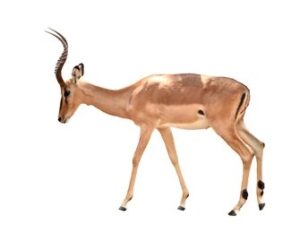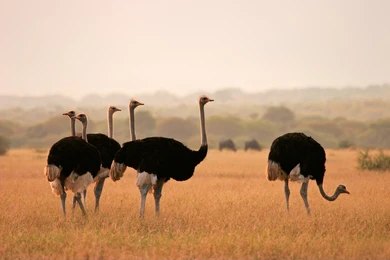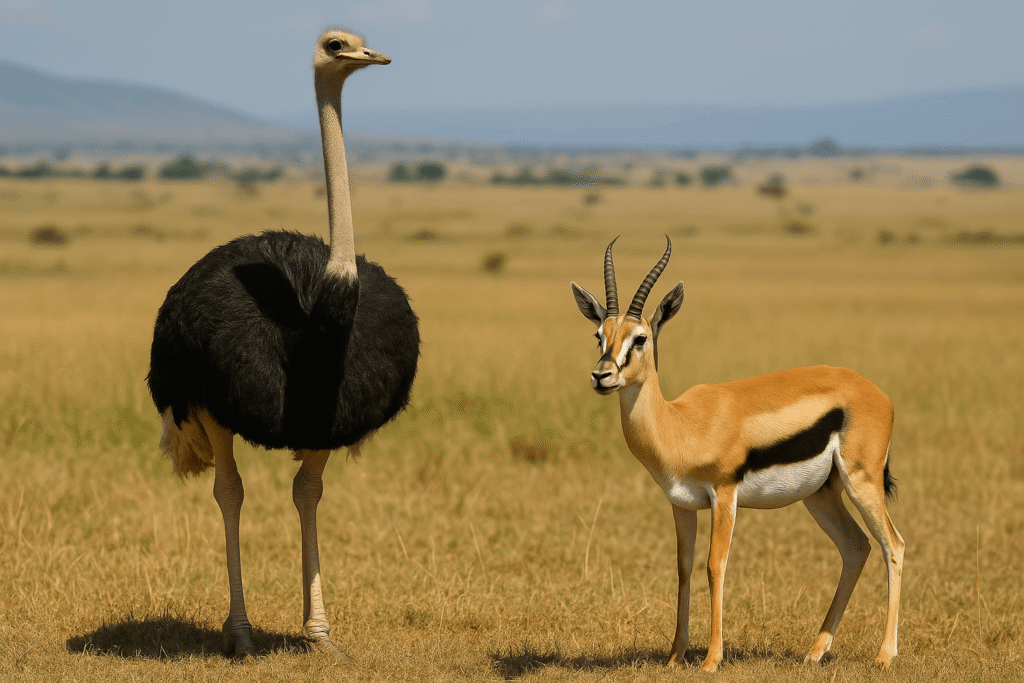Ostrich and Gazelle Relationship: A Silent Alliance in the Savannah
A silent alliance plays out daily on the great, sun-soaked plains of Africa—one that most people ignore yet is quite important for animals. This fascinating example is best known as the ostrich and gazelle relationship.. Two quite different creatures that cooperate in a lovely example of mutualism, where both species gain from each other’s presence without official communication or shared living quarters, are ostriches and gazelles—an unusual alliance.


🌿 Ostrich and Gazelle Relationship: Survival Through Shared Strengths
Though one is a towering, flightless bird and the other a fleet-footed ruminant, ostriches and gazelles have discovered common ground in their survival need. This paper investigates the nature of their relationship, the reasons for it, how it helps both species, and what it reveals regarding the intelligence and adaptability of wild animals.
🦒 Shared Habitat, Shared Challenges
Particularly in nations including Kenya, Tanzania, Botswana, and South Africa, ostriches and gazelles both call the savannas, grasslands, and semi-arid areas of Africa home. These open areas provide great difficulties even if they consistently offer a supply of grasses and bushes. Seeking prey, predators including lions, leopards, cheetahs, and wild dogs wander these vast pastures. Few trees or hiding spots mean that visibility is more important and that danger can come from any direction. Living in such surroundings, animals depend not only on their own senses but also frequently gain from those of other species in their habitat.
👀 Vision Meets Vigilance in the Ostrich and Gazelle Relationship
The complementing sensory skills of ostriches and gazelles define their connection. Every species gives the alliance unique strength. Rising to be nine feet tall with long necks and strong legs, ostriches are the biggest birds on Earth. Their scale allows them a literal advantage: they can identify predators from long distances and see over thick grasses. Actually, ostriches compete with birds of prey for some of the best eyesight in the animal world. From more than a mile away, they can identify hazards; their elevated vantage position lets them keep an eye over a large swath.


Conversely, gazelles are not as tall and have less view range. But they have sharp hearing and a highly developed sense of smell, which enables them to identify minute sounds or smells that could be undetectable to other animals, including ostriches. They hear footsteps, rustling in the grass, or distant growling. Predators long before they are visible can be smelled by their noses. These two species naturally create an early warning system by closely spaced themselves. Should the ostrich notice something strange, it tenses, freezes, or runs; the gazelle follows. Should the gazelle hear something, it responds; the ostrich detects the movement and bolts too.
🤝 Mutualism in Action
Ostriches and gazelles have a mutualistic relationship, a kind of symbiosis whereby one organism gains from the other. In this example, the gazelle gains visual coverage it cannot get on its own from the great vision of the ostrich. The keen hearing and scent of the gazelle provide the ostrich sensory input it does not have. Neither species depends on the other or suffers to survive; rather, their chances of evading predators rise significantly when they live together.
🧬 Built on Instinct, Not Intellect
There is no even deliberate cooperation or verbal communication required by this arrangement. Built on evolutionary instincts, one flees and the other responds. Animals who naturally gathered together and followed each other’s signals had a better survival rate over generations. It evolved into an innate behavior pattern finally.
🐆 Outsmarting Predators Together
The African savannah treats the sluggish or inattentive poorly. Depending on stealth and surprise, predators like cheetahs and lions often track their prey for several minutes before attacking. Ostriches and gazelles thwart those intentions here. With their panoramic view, ostriches sometimes see the predator before it attacks. They might stop eating, raise their heads, or perhaps produce a quiet warning hiss. Gazelles sense the change and get ready to run with their twitchy behavior and group vigilance. Their startled leap or freeze then informs the ostrich if the gazelle hears something before it sees it. Both species are kept on edge by this nonverbal communication loop, which also provides a few critical seconds that might make all the difference between life and death.
⚡ Speed and Strategy
Fascinatingly, albeit in different ways, both ostriches and gazelles are quite swift. Running up to 70 kilometers per hour, ostriches can keep that speed over great distances. Their legs are geared for large strides and endurance. Though they can run comparable distances, gazelles are more well-known for their nimble changes of direction and fast acceleration, which would be ideal for brief bursts of predator avoidance. Many times, the ostrich might be the first to see a hazard, while the gazelle might be the first to flee. Often confusing the predator, which has to choose only one prey, both animals tend to run in the same direction. This survival strategy is what defines the ostrich and gazelle relationship, built on instinct and mutual benefit.
🌱 Peaceful Coexistence
Though this is not the case here, two herbivores living together would not fight over the same plants. Mostly on seeds, roots, and leaves, ostriches have Sometimes they devour lizards or insects. Mostly, gazelles eat grasses and herbs. Their diets only somewhat coincide, so there is little direct food competition. This allows them to coexist peacefully for extended lengths of time without conflict, ideal arrangement for a mutualistic relationship.
🔄 Evolution of a Partnership
Ostriches and gazelles who stayed alert to one another had a superior survival rate across thousands of years, which provided more chances for reproduction and passing on their instincts. Today’s ostriches and gazelles are so naturally motivated to stick around mixed herds, react swiftly to each other’s motions, and remain close to animals with complimentary strengths. This is an instance of behavioral evolution, not one motivated by physical characteristics but rather by learnt or innate acts raising survival possibilities.
🌍 Nature’s Lesson in Teamwork
Ostriches and gazelles have a partnership that teaches cooperation and adaptation rather than only a fascinating fact about animals. These two creatures show in a world of competition that diverse strengths can mix to overcome shared difficulties. They need not be like each other or even comprehend one another. They merely need to remain conscious, honor the instincts of the other, and respond accordingly. This same idea holds in business, community, or team environments. Sometimes the finest alliances are between persons with diverse strengths and shared objectives rather than among like-minded individuals.
🐾 Final Thoughts on the Ostrich and Gazelle Relationship
Ostriches and gazelles are a remarkable illustration of how wild animals develop means of survival through their interactions. Their connection demonstrates the strength of instinctual teamwork and mutual benefit even if their sizes, behaviors, and biology are quite different. By means of complimentary senses—sight and scent, height and speed—these two animals have overcome the odds in one of the most demanding surroundings. Thus, keep in mind next time you consider the fauna of Africa: although they may not be best friends, the ostrich and gazelle are the silent partners in survival of the Savannah. The ostrich and gazelle relationship is a silent partnership built on instinct, not communication.
Stay Connected with Twistoinfo Relationships & Dating
Also Read post on Quora



